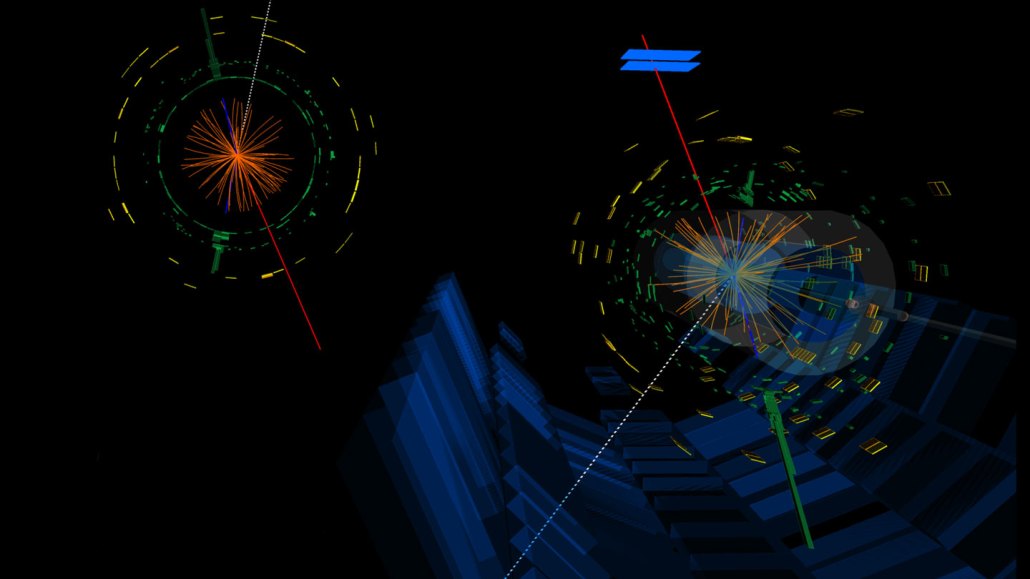Physicists spotted rare W boson trios at the Large Hadron Collider
The ‘WWW’ events appeared in the ATLAS experiment

Physicists detected triplets of W bosons in the ATLAS experiment. One candidate WWW event is shown in two different views in this visualization, in which the W bosons decay into other particles (whose reconstructed tracks are illustrated by colored lines).
ATLAS Collaboration